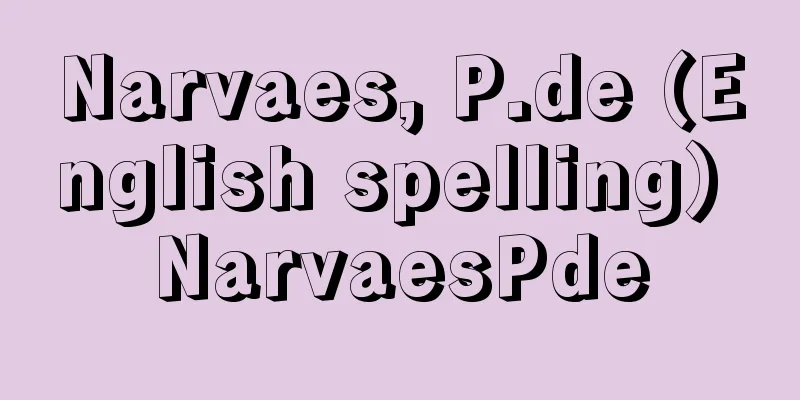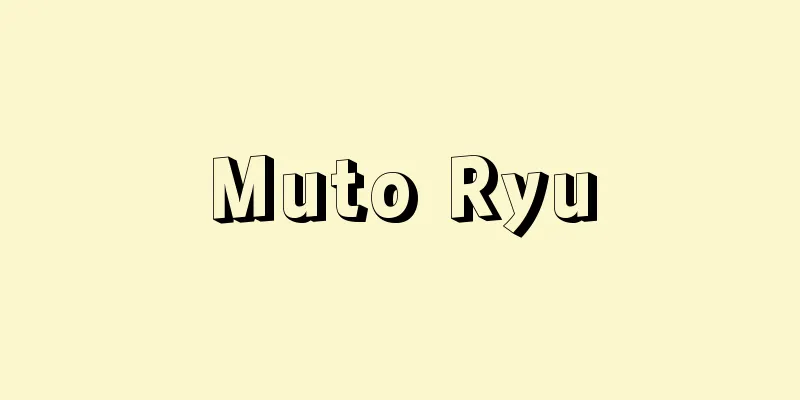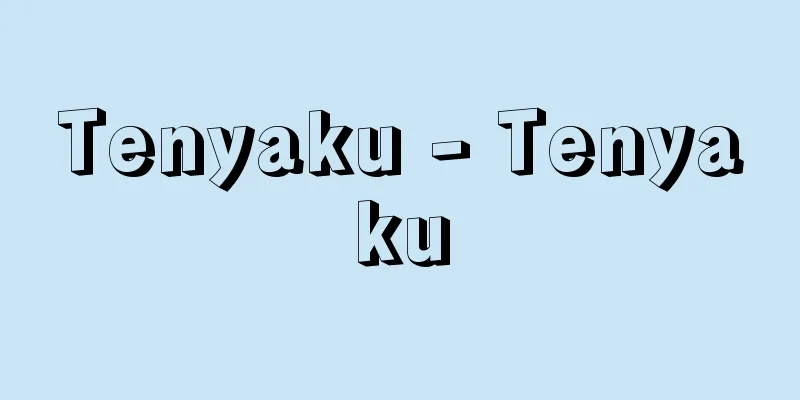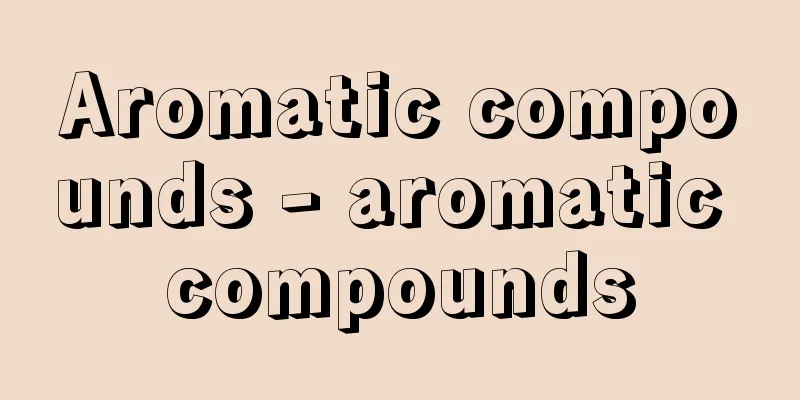Akita Ranga

|
A school of Western-style painting that emerged in the Akita region in the late Edo period and its works. "Ranga" was the term used at the time to mean Dutch painting, or Western-style painting. It is also called the Akita school or Akita-style Western-style painting. In 1773 (An'ei 2), the Akita clan invited the product scholar Hiraga Gennai from Edo to improve the technology of the mines in the domain and increase production. On his way to the Ani copper mine, Gennai met the skilled samurai Odano Naotake in Kakunodate, a branch castle of the Akita clan. Gennai knew about Western painting techniques from illustrations in Western books, so he taught Naotake about shading and perspective techniques and encouraged him to study Western painting techniques. Naotake passed on the knowledge he had gained from Gennai to the clan lord Satake Yoshiatsu (pen name Shozan), who was also a skilled artist, and together they began to learn new painting techniques. People such as Kakunodate Castle governor Satake Yoshimune and feudal lord Tashiro Tadakuni gathered around the two of them with the aim of creating Western-style paintings. Following Gennai's return to Edo, Naotake was appointed inspector of copper mine products and travelled to Edo in the winter of 1773. He formally studied under Gennai in Edo, deepening his study of Western painting techniques through Western books and copperplate prints, and was commissioned by Sugita Genpaku to provide illustrations for the translation and publication of the famous Kaitai Shinsho the following year in 1774. Meanwhile, Shobonozan, Yoshimune and others would call on Naotake whenever they travelled to Edo on duty, and together they would hone their painting skills. As was common among Western-style painters before the Meiji era, they learned Western painting techniques by copying Western copperplate prints and illustrations in books, but they also sketched plants, birds and small animals. He also adds shading and perspective techniques to the style of the Kano school and Chinese portraits of birds and flowers, and employs the intricate, detailed depictions he learned from Western copperplate engravings to create aesthetic paintings that are full of realism. In 1778 (An'ei 7), Satake Shozan wrote Japan's first treatise on Western painting, "Gaho Koryo" and "Gazu Rikiri." These strongly advocated the superiority of Western painting in terms of realism, explaining the theories of shading and perspective with accompanying illustrations, as well as the manufacturing methods of Western pigments and oil paints. However, the period of production of Akita Ranga was short-lived, and its development was halted when its central artist, Odano Naotake, died at the early age of 32 in 1780. After Satake Shozan's early death five years later, production continued intermittently by Tashiro Tadakuni, Satake Yoshimune and others, but its historical life came to an end around the beginning of the 19th century. Akita Ranga was the first school of Western-style painting to be organized after Christian Western-style painting in the early modern period had declined. Although it ultimately belongs to the broader Edo-style Western-style painting, its pioneering spirit preceding Shiba Kokan is highly regarded. Of course, many Akita Ranga works are merely Chinese paintings of birds and flowers, with some Western painting techniques added, and oil paints were rarely used. However, the fact that he used Western painting techniques to depict Oriental or Japanese objects, albeit simply, is groundbreaking in the history of Western-style painting. Recent research suggests that Odano Naotake influenced the early Western-style paintings of Shiba Kokan. Towards the end of his short life, Naotake gradually moved away from Chinese painting themes and tried to move towards realistic paintings of Japanese landscapes, but he died without having achieved sufficient results in this field. However, his legacy was carried on by Kokan's copperplate engravings of famous Edo landscapes, and developed to a higher level. Thus, Akita Ranga did not necessarily disappear in an instant, but can be said to have been at the beginning of Edo-style Western-style painting. [Fujio Naruse] "Catalogue of Akita Ranga (1974, Sanichi Shobo)" by Momosuke Ota, Rintaro Takehana, and Fujio Naruse ; "Western-style Paintings of Edo (1977, Shogakukan)" by Fujio Naruse [References] | | |Source: Shogakukan Encyclopedia Nipponica About Encyclopedia Nipponica Information | Legend |
|
江戸時代後期に秋田地方で興った洋風画派とその作品。「蘭画」は当時のことばでオランダ絵、つまり洋風画を意味する。秋田派、秋田系洋風画ともいう。1773年(安永2)秋田藩は物産学者の平賀源内を江戸から招いて、領内の鉱山の技術改良と産額増大を図った。源内は阿仁(あに)銅山に赴く途中、秋田藩支城のある角館(かくのだて)で絵の巧みな武士小田野直武(おだのなおたけ)に出会った。源内は洋書の挿絵によって西洋画法を知っていたので、直武に陰影法や透視遠近法などの知識を与え、西洋画法を研究するように勧めた。直武は源内から得た知識を、同じく絵の巧みな藩主佐竹義敦(さたけよしあつ)(号曙山(しょざん))に伝え、互いに協力して新しい画法の習得に着手した。2人の周囲には角館城代の佐竹義躬(さたけよしみ)や藩士の田代忠国(たしろただくに)らが、洋風画を目ざして集まった。 江戸へ帰る源内に続いて、直武は銅山方産物吟味役(どうざんがたさんぶつぎんみやく)を命ぜられて、1773年の冬、江戸に上った。彼は江戸で正式に源内に師事し、西洋の図書や銅版画によって西洋画法の研究を深め、翌1774年の有名な『解体新書』の翻訳出版に際しては、杉田玄白の依頼で挿絵を描いている。一方、曙山、義躬らは参勤のため江戸に上るたびに、直武を呼んで、ともに画技の修練に励んだ。彼らは明治時代以前の洋風画家の常として、西洋銅版画や図書の挿絵を写して西洋画法を習得したが、植物、鳥類、小動物などの写生も行った。また、狩野(かのう)派や中国の写生体花鳥画の画風に、陰影法や透視遠近法を加味し、西洋銅版画から学んだ精緻(せいち)な細密描写を採用して、実感味あふれる鑑賞画を制作している。 佐竹曙山は1778年(安永7)に、日本最初の西洋画論『画法綱領』と『画図理解』を書いた。それらは西洋画の写実における優秀性を強く主張し、陰影法や透視遠近法の理論を解説図入りで説き、あわせて西洋画の顔料や油絵の具の製法に及んでいる。しかし、秋田蘭画の制作期は短く、1780年に中心作家の小田野直武が32歳で早逝すると、その発展の芽を摘み取られた。そして5年後に佐竹曙山が同じく早逝したのちは、田代忠国や佐竹義躬らによって断続的に制作が行われたが、ほぼ19世紀初頭にはその歴史的生命を閉じた。 秋田蘭画は、近世初期のキリシタン系洋風画が衰滅したあと最初に組織された洋風画派であった。それは結局広義の江戸系洋風画に属するが、司馬江漢に先だつ先駆性は高く評価される。もちろん、多くの秋田蘭画の作品は、漢画の花鳥図や花卉(かき)図にいくぶんかの西洋画法を加味したものにすぎず、油絵の具などもまず用いられていない。しかし、素朴ながら西洋画法をもって東洋的ないし日本的な事物を描いたことには、洋風画史上、画期的な意義がある。 近年の研究によると、小田野直武は司馬江漢の初期の洋風画に影響を及ぼしたようである。直武は短い生涯の晩期にしだいに漢画の主題を離れ、実写的な日本風景図に進もうとしていたが、この方面で十分な業績をあげずに没した。しかし、彼の遺業は江漢の銅版江戸名所風景図に継承され、より高い次元のものへ発展した。そこで、秋田蘭画はかならずしもはかなく消滅したわけでなく、江戸系洋風画の初期に位置するものであったということができよう。 [成瀬不二雄] 『太田桃介・武塙林太郎・成瀬不二雄著『図録・秋田蘭画』(1974・三一書房)』▽『成瀬不二雄著『江戸の洋風画』(1977・小学館)』 [参照項目] | | |出典 小学館 日本大百科全書(ニッポニカ)日本大百科全書(ニッポニカ)について 情報 | 凡例 |
Recommend
Tao Jingsun - Toshoson
Chinese author and medical scientist. His given n...
Odd Eyes - Odd Eyes (English spelling)
Heterochromia is when the eyes are different color...
Inter Type
(Intertype) A machine that automatically casts typ...
Antilock Braking System
A type of safe and effective braking system for au...
Thiobarbiturates
...It has all the advantages of other volatile an...
Mount Sumon - Sumondake
A mountain in the eastern part of Niigata Prefect...
Yoshio Kitahara
…Art magazine. It was first published in April 19...
Song, verse, time
… Along with morimono (arranged flowers), it was ...
undertow
…On the other hand, rip currents are difficult to...
Hardy-Weinberg's law
For example, in a population of 100 individuals, ...
Iwaki Shrine
A shrine located in Hikari City, Yamaguchi Prefect...
Anchiarin - Anchiarin
…Arrow poison is made by collecting the latex tha...
Shiddanzo - Shiddanzo
Written by the Tendai Buddhist monk An'nen. Ei...
Kanamura Wakeikazuchi Shrine
…In recent years, industrial parks set with resid...
Playful
[1] 〘Moving〙 Meaning: Welcome. The call made by ma...









